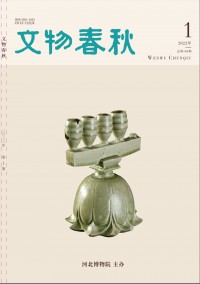安徒生剧本
前言:想要写出一篇令人眼前一亮的文章吗?我们特意为您整理了5篇安徒生剧本范文,相信会为您的写作带来帮助,发现更多的写作思路和灵感。

安徒生剧本范文第1篇
今天,我翻开了《他让嘲笑见鬼去》这本书,同时也让我了解到著名童话大师安徒生一生的经历是那样的坎坷不平,一直受到人们的嘲笑。
安徒生出生在丹麦的一个城市,那里分为贫民区和富人区,。安徒生地家庭十分穷苦,小时候,他没有朋友,同龄孩子都经常嘲笑安徒生。,还称他为丑小鸭、爱哭鬼等,他爸爸室一位鞋匠,但很喜欢读书,给安徒生将了《一千零一夜》地故事,将莎士比亚的剧本,从此安徒生迷上了剧本与童话,每天都沉浸在自己地幻想当中,它想当一名歌唱家、演员、剧作家,便想方设法地来到了哥本哈根,经过多次碰壁。我看着他满怀希望地去当演员,但都被拒绝了,我看着他的嗓子被歌唱家看重,嗓子却又毁了,我看着他又去当剧作家,最后还是失败而归。我的心情一下子就到达了低谷,心里十分沉重,泪水不由自主地在眼眶里打转儿,令我十分惊异的是他竟然坚持下来了,好运气也随之到来,一位好心的先生西林把他送到一所教会学院去,安徒生虽然很认真,但仍然就经常被老师和同学嘲笑,我完全能体会出当时他内心的痛苦,但他仍然坚持下来了,他心中只有一个念头:让嘲笑见鬼去吧!安徒生爱上了写诗,但校长发现后,狠狠地吧安徒生批评了一顿,只因为他写的诗总是得不到好评,我不禁想:这个校长可真自私呀!安徒生的诗却得到了西林他们的肯定,他开始写诗歌、写小说了。他写的书卖得很快,那些为人却处处写诗来嘲笑他、打击他,我心想:为了自己的地位竟这样对待安徒生,但后来也不得不承认他写的好,但安徒生写上童话后,他又陷入了孤立无援地地步,他坚持下来,终于成了世界著名地童话家。读了这本书,我感慨万千,安徒生放纵梦想,忍受各方面地嘲笑,不停创作,终于在全世界流传。为什么他能写出这么优秀的作品?那是因为他拥有 丰富地想象力,为什么安徒生能坚持写童话?因为他有自信。是的,让嘲笑见鬼去,在生活中也是一样,只要你战胜了嘲笑与白眼,那么还有什么东西能抵挡我们前进的道路呢?
读了《他让嘲笑见鬼去》这本书,我终于明白嘲笑并不可怕,只要你又自信心、决心,就一定会战胜困难与嘲笑。
安徒生剧本范文第2篇
1、汉斯·克里斯汀·安徒生(Hans Christian Andersen,1805年4月2日—1875年8月4日),丹麦19世纪童话作家,被誉为“世界儿童文学的太阳”。安徒生的代表作有《坚定的锡兵》《海的女儿》《拇指姑娘》《卖火柴的小女孩》《丑小鸭》《皇帝的新装》等。
2、安徒生出生于欧登塞城一个贫穷的鞋匠家庭,童年生活贫苦。父亲是鞋匠,母亲是佣人。早年在慈善学校读过书,当过学徒工。受父亲和民间口头文学影响,他从小爱文学。11岁时父亲病逝,母亲改嫁。为追求艺术,他14岁时只身来到首都哥本哈根。17岁发表诗剧《阿尔芙索尔》,崭露才华。因此,被皇家艺术剧院送进斯拉格尔塞文法学校和赫尔辛欧学校免费就读。历时5年。1828年,升入哥本哈根大学。毕业后始终无工作,主要靠稿费维持生活。1838年获得作家奖金——国家每年拨给他200元非公职津贴。安徒生文学生涯始于1822年的编写剧本。进入大学后,创作日趋成熟。曾发表游记和歌舞喜剧,出版诗集和诗剧。1835年出版长篇小说《即兴诗人》,为他赢得国际声誉,是他的代表作。他的作品《安徒生童话》已经被译为150多种语言,在全球各地发行和出版。
(来源:文章屋网 )
安徒生剧本范文第3篇
在丹麦众多迷人的风光之中,首都哥本啥根无疑是最令人流连忘返的。哥本哈根被称作“北方的巴黎”。每年六、七月这里都有爵士音乐节,大小船只停泊在运河中,音乐响起来了,海中的哥本哈根也飘了起来。“哥本哈根”在丹麦文的原文意思是“商人的港口”它最初是个渔村。1167年奥斯基勒大主教阿布萨拢在此修建了第一座城堡,1443年被定为首都。
在哥本哈根,城市观光车的起点就在市政厅旁边。如果你有兴趣自己去发掘这座城市的美丽,你会发现在这里有许多窄小的街道和富有情趣的河道,这里还有一条特殊的港口和运河观光路线值得一游,因为在这条观光路线上你可以看到这个城市的许多别具特色的房子。
安徒生的童话作品《海的女儿》中的主人公“小美人鱼”是我们大家熟悉的童话人物,她凄美哀婉的爱情故事曾经打动了无数人。坐落在丹麦首都哥本哈根港口的“小美人鱼”铜像也因此成为丹麦的象征。“小美人鱼”在哥本哈根人心中占有特殊的位置,每天都有来自世界各地的游客排着长队争相拍摄美人鱼的倩影。出自丹麦雕塑家埃里克森之手的“小美人鱼”,自1913年起便静静地安坐在海湾边的岩石上,守望着哥本哈根港品。黄铜制成的“小美人鱼”雕像高约1.25米,由于游客很容易爬上雕像的平台,与“小美人鱼”进行“零距离接触”,因此“小美人鱼”自诞生以来曾几次遭到不同程度的破坏。尽管如此,“小美人鱼”还是受到了大多数游客的爱惜。每逢她的生日,都会有来自世界各地的游客为“小美人鱼”带来自己的祝福。
丹麦人认为安徒生所取得的文学成就远远不止童话。他一生撰写了210篇童话,同时也写了1000多首反映丹麦风土人情和社会情况的诗歌,后人为他的许多诗歌谱曲,成为民歌传唱。同时,他还创作了剧本、小说、游记、自传等大量文学作品。丹麦民众1875年集资在哥本哈根市内国王公园为安徒生70岁诞辰竖立了雕像,并将各国安徒生著作版本收藏于安徒生的帮居内、建成了“安徒生故居博物馆”。随着安徒生的声誉和著作影响的扩大,世界各国安徒生著作版本的增加以及故居博物馆参观者人数的增多,博物馆两度扩建:一次在1930年,为安徒生诞辰125周年;另一次在1975年,为安徒生逝世100周年。
安徒生故居博物馆位于丹麦菲菌岛中部的奥登塞市区。博物馆是一座红瓦白墙的平房,坐落在一条鹅卵石铺的街巷里。这里临街的一幢幢古老式样的建筑,使人感到仿佛回到了19世纪安徒生生活的年代。博物馆共有陈列室18间。前12间按时间顺序介绍安徒生生平及其各时期作品,展出大量安徒生作品的手稿、来往信件、画稿以及丹麦一些名画家、艺术家创作的有关安徒生生活的油画和雕塑。安徒生生前的用具仍按原样摆放着,古朴的家具,两只有补丁的旧皮箱,一顶礼帽,一个提包,一把雨伞,一根手杖。这些曾经长期伴随他的简陋的旅行行装,体现他朴实的生活和情趣。第11间为建于1930年的圆柱形大厅,其几米高的环形墙展出丹麦近代著名艺术家斯坦恩斯根据安徒生的自传体著作《我一生的童话》而作的8幅壁画,内容有安徒生童年、离别故乡、国外游历、与世界著名艺术家的交往等安徒生生前各阶段的生活与写作的经历。
责编/刘书艳
安徒生剧本范文第4篇
达・芬奇的父亲:充分发展孩子的兴趣
著名画家达・芬奇的父亲彼特罗是一位令人称道的好父亲,他培养孩子的信条就是:给孩子最大的自由,让孩子发展自己的兴趣。
6岁那年,达・芬奇上学了,在学校里学了很多知识,但对绘画最感兴趣。一天,他上课不专心听讲,还给老师画了一幅速写。回家后,达・芬奇把速写给父亲看,父亲不仅没有生气,反而夸奖他画得很好,决定培养他在这方面的才华。
正是因为父亲如此开明,达・芬奇全身心投入到自己喜爱的绘画中,甚至敢专门画画恐吓老爸。一次,他花了一个月时间,在盾牌上画了一个两眼冒火、鼻孔生烟,看起来十分可怕的女妖头。为了把父亲吓一跳,他还关紧窗户,只让一缕光线照到女妖头的脸上。后来,父亲一进家就被盾牌上的画吓坏了,可是等达・芬奇哈哈大笑地解释完,他竟然也没有责备儿子。
16岁那年,父亲把达・芬奇带到画家维罗奇奥那里学画画。在维罗奇奥的指导下,达・芬奇刻苦学习,掌握了很多绘画技巧,终于成为一代大画家。
莫扎特的父亲:不惜放弃工作培养孩子
奥地利作曲家莫扎特小时侯被无数人誉为“神童”,他的许多作品一直是古典音乐中经久不衰的保留曲目。但是,莫扎特有如此成就是与他父亲的精心培养密切相关的。
莫扎特3岁时,父亲就发现他经常静静地坐在一边,很有兴趣地看姐姐练琴,于是就开始对他进行启蒙教育。在父亲的指导下,莫扎特5岁就开始创作短曲,6岁时创作钢琴协奏曲。后来,为了更好地培养他,父亲甚至放弃了在宫廷里当乐师的工作,将全部精力用在莫扎特身上。
可以说,没有父亲那份执着的精神、严格的要求和深厚的关爱,是无法造就莫扎特这样一位音乐大师的。
安徒生的父亲:穷鞋匠培养出大作家
丹麦童话作家安徒生出生在富恩岛上一个叫奥塞登的小城镇上,那里有不少贵族和地主,而安徒生的父亲只是个穷鞋匠,母亲是个洗衣妇。贵族地主们怕降低了自己的身份,从不让自己的孩子和安徒生一起玩。安徒生的父亲对此非常气愤,但一点也没有在孩子面前表露,反而十分轻松地对安徒生说:“孩子,别人不跟你玩,爸爸来陪你玩吧!”
父亲亲自把安徒生简陋的房间布置得像一个小博物馆,墙上挂了许多图画和做装饰用的瓷器,橱窗柜上摆了一些玩具,书架上放满了书籍和歌谱,就是在门玻璃上,也画了一幅风景画。父亲还常给安徒生讲《一千零一夜》等古代阿拉伯故事,有时则给他念一段丹麦喜剧作家荷尔堡的剧本,或者英国莎士比亚的戏剧本。
为了丰富安徒生的精神世界,父亲还鼓励安徒生到街头去看埋头工作的手艺人、弯腰曲背的老乞丐、坐着马车横冲直撞的贵族等人的生活,这些经历为安徒生以后写出《卖火柴的小女孩》、《丑小鸭》等童话故事打下了很好的基础。
列夫・托尔斯泰:用鹅毛笔为孩子读物描图
俄国文学家列夫・托尔斯泰十分注意培养孩子的学习兴趣,他常常抽时间给孩子们讲故事、绘画,回答他们提出的各种问题。
托尔斯泰从不给孩子强行灌输知识,而是根据孩子们的爱好和兴趣为他们服务。有一段时间,孩子们对作家儒勒・凡尔纳的作品很感兴趣,托尔斯泰就一本又一本地讲给他们听。
后来,他发现《环球旅游80天》这本书没有插图,为了帮助孩子们理解故事情节,他竟然每天晚上用鹅毛笔亲自为该书描制插图。托尔斯泰的时间是宝贵的,但是他认为,把时间花在提高孩子的学习兴趣、激发孩子的求知欲方面是值得的。
约翰・D・洛克菲勒:锻炼身体与游历世界
在19世纪时,洛克菲勒家族事业的创始人约翰.D.洛克菲勒只是一个周薪7美元的打工仔,但他通过个人奋斗最后创建了标准石油公司。在教育自己的下一代方面,他制订了许多严格的“措施”。
约翰・D・洛克菲勒常常和孩子强调锻炼身体的重要,儿子上学时,他让儿子滑着旱冰经过中央公园到林肯学校,家庭司机只是开着车跟在后面。
另外,洛克菲勒家族很注重到世界各地游历对孩子成长的影响。孩子很小的时候,就跟着父母、带着家庭教师和一大堆行李,开始飞越美国大陆、欧洲、北非等地。这种教育增强了孩子们认识社会多元化和准确把握社会常理的能力,为以后确立人生目标起到很好的启发作用。
盖茨的父亲:让孩子从小懂得凭本事挣钱
世界软件业巨头――微软公司的老总比尔・盖茨出身于美国西雅图一个富裕的律师家庭,他父亲威廉很注重从小培养他“凭本事打拼”的意识。
威廉说:“重要的是要让孩子知道自己能够赚钱,并且不管做什么事情都要有信心和干劲。”盖茨帮家里做事,父亲总是给予一点小报酬,以此激发他的热情,让他懂得工作是通往幸福的台阶。威廉表示,这样做可以让孩子了解现实社会和外部世界,也可以让孩子了解大家一起劳动,一起追求同一目标的快乐。
上私立高中时,盖茨就和朋友一起开发了计算市内交通量的软件,并在竞争中取胜,签订了一份数额不小的合同。后来,学校的负责人雇用他们编制教学计划,盖茨还与人合作,编写了企业的工资系统用的程序。威廉夸奖说“盖茨是通过劳动获取报酬的。”
他信:泰国总理千金去麦当劳打工
泰国总理他信是第四代泰国华裔,也是东南亚著名的“电信大亨”,家里十分富裕。但是,现年55岁的他信对自己的一子二女要求相当严格,甚至主动要求孩子出去“受苦”,长经验、长见识。
2004年3月,他信的小女儿贝东丹高考结束后,他信把女儿送到曼谷一家麦当劳餐厅打工,贝东丹一时间成为泰国媒体关注的焦点。他信说:“我就是想让她有这个经历,让她了解生活,从而能更快地适应工作,适应社会,并培养责任感。”
安徒生剧本范文第5篇
人生,有失意的精彩,有失意的悲哀。失意孕育诗意,苦中有乐,先苦后甜;诗意彰显失意,每一个成功的人士背后,均有一段不为人知的艰辛。认识失意,既是认识自己,也是认识生活。笑看失意,会让你的人生更精彩。
世界上很多人都喜欢安徒生的童话,人们往往只看到他闪光的一面,可是谁又知道他一生当中经受了多少屈辱?安徒生出生于一个鞋匠家庭,14岁时就开始出去谋生。当时他一心想当演员,可是别人却认为他是一个神经不正常的小乞丐。无奈之下,他到一个家具店当学徒,受尽了欺凌。后来,他尝试写剧本,又有人百般地嘲笑他,说他只会吹牛。这些侮辱深深地刺伤了安徒生的心,但是他从来没有灰心丧气,更没有产生绝望的念头,而是自己更加努力,终于成为闻名于世的童话大王。
前苏联著名教育家苏霍姆林斯基说过:“人生在世,不总是一帆风顺和美妙动人的。”人生之路总是坎坷不平,人生之路总是荆棘丛生。在这不完美的世界里,谁能没有失意的时候呢?
失意的日子里,似心绞痛者的感觉,似乎什么都不想也不愿意去听。待安静下来时,沉沉的欲念依然会沿着昨日的希冀之梦频频演绎着,似乎有无数悲愤的话要冲口而出,但却无从发泄。惆怅独对斜阳,忽觉自己弱小而无助,连晚风也发出叹息声在嘲笑自己,心理往往无法平衡。由于一时的失意会让你联想到从前、现在和未来,不仅仅是黯然的惆怅,许多失败的经历也会历历在目,变得异常清晰,许多走过的坎坎坷坷也变得难以逾越,许多昨日蔑视的困扰都蜂拥而至,想逃也逃不了。失意的日子是黑暗的,失意又是人人必须经受的。
人生,是失意还是诗意,并非取决于环境,而是更多地源于自己的心境。当年,坡因为无中生有的“乌台诗案”而被贬黄州,一个率真的诗人与秉直的官员,遭到了人生的重重打击。他对政治与人生充满厌倦,但并没有颓废,一边寄情山水,一边冷静思考,最终悟懂了人生,并更加热爱与享受生命了。那著名的《赤壁赋》和《念奴娇·赤壁怀古》就是在这个时期写就的:“唯江上之清风,与山间之明月,耳得之而为声,目遇之而成色。取之无尽,用之不竭。是造物者之无尽藏也,而吾与子之所共适。”面对人生的困境,却有着一颗蓬勃的诗心,这是何等超凡美妙的境界?
人生再失意,也要多为自己保存一点天真。诗意的生活不是上天的恩赐,不是你辛苦打拼就能换来的。它在于你心中有天地,灵魂中有向善的追寻,性情里留有一份无所拘束的童真。无论我们暂时身处怎样失意的境地,我们都应对生活秉持一份率真的情趣。
免责声明:以上文章内容均来源于本站老师原创或网友上传,不代表本站观点,与本站立场无关,仅供学习和参考。本站不是任何杂志的官方网站,直投稿件和出版请联系出版社。

